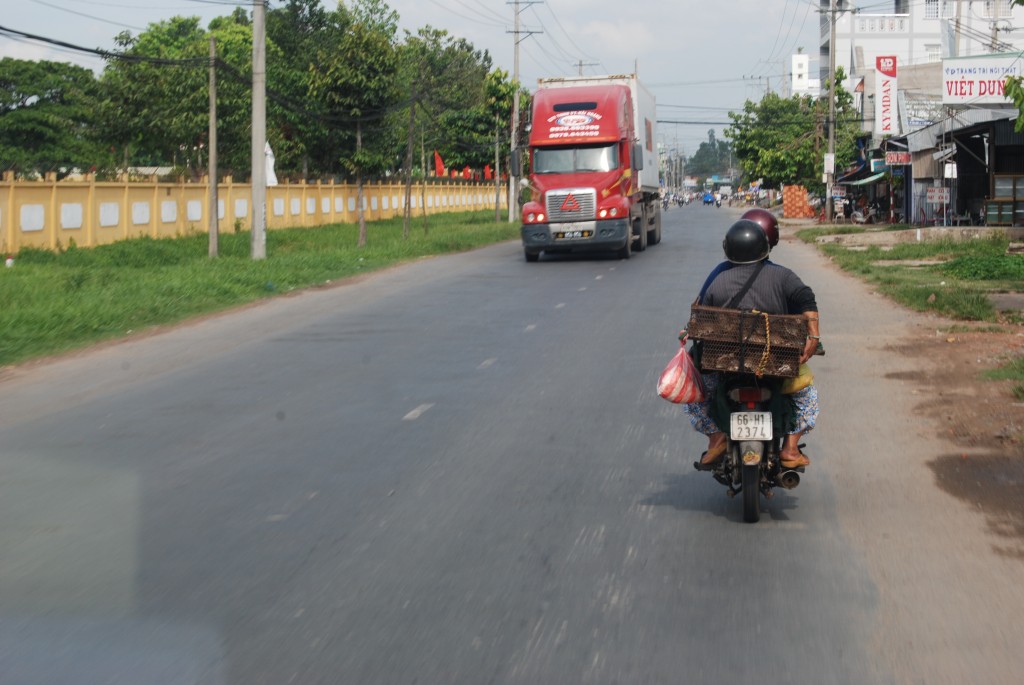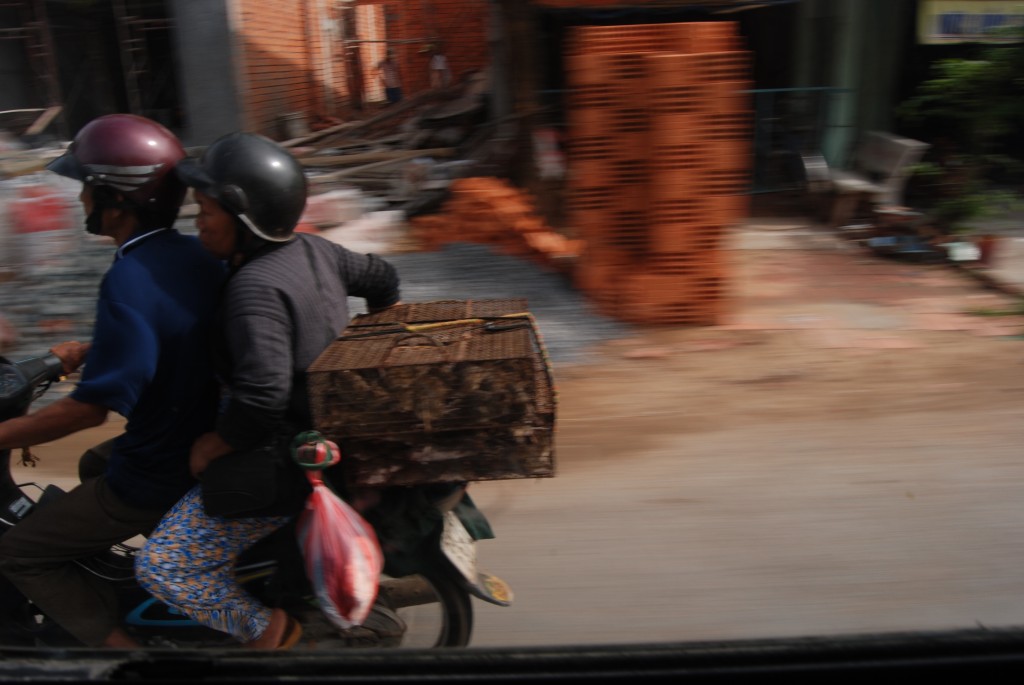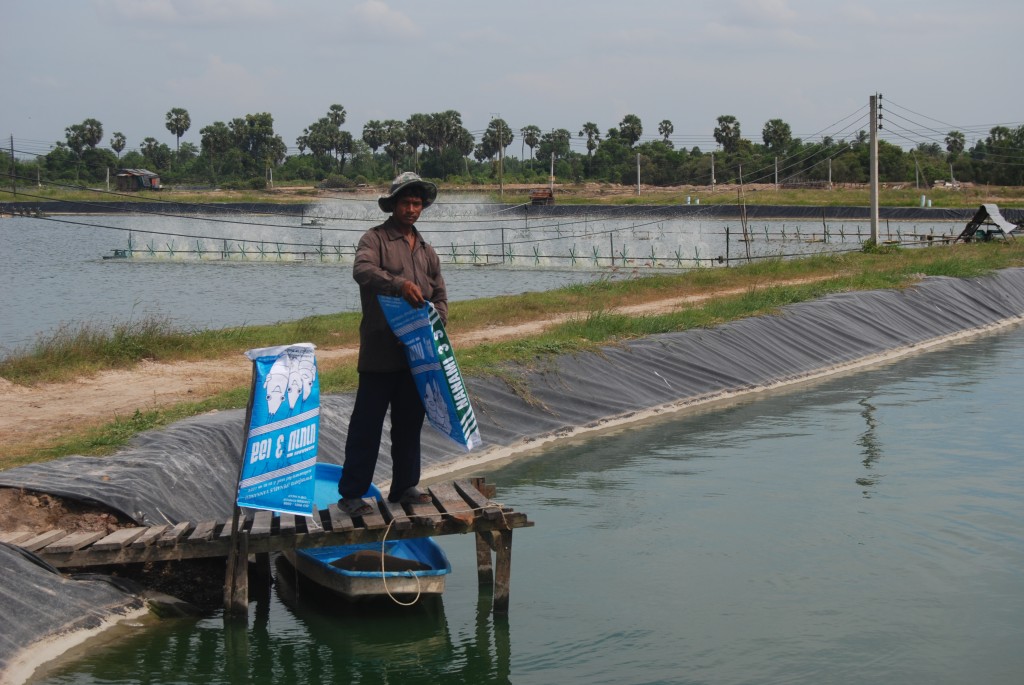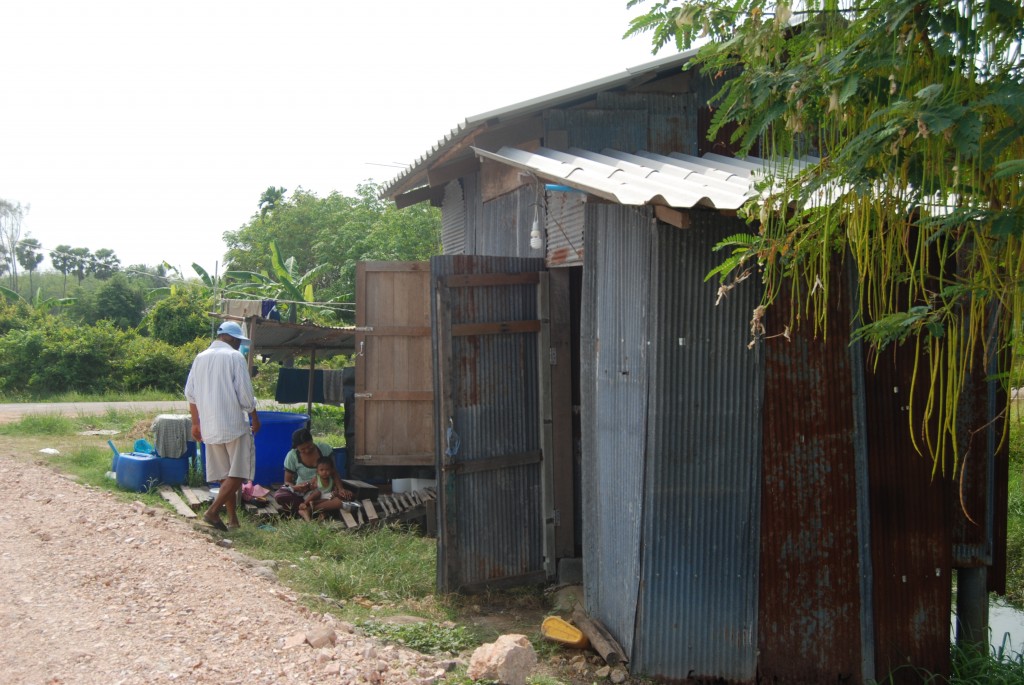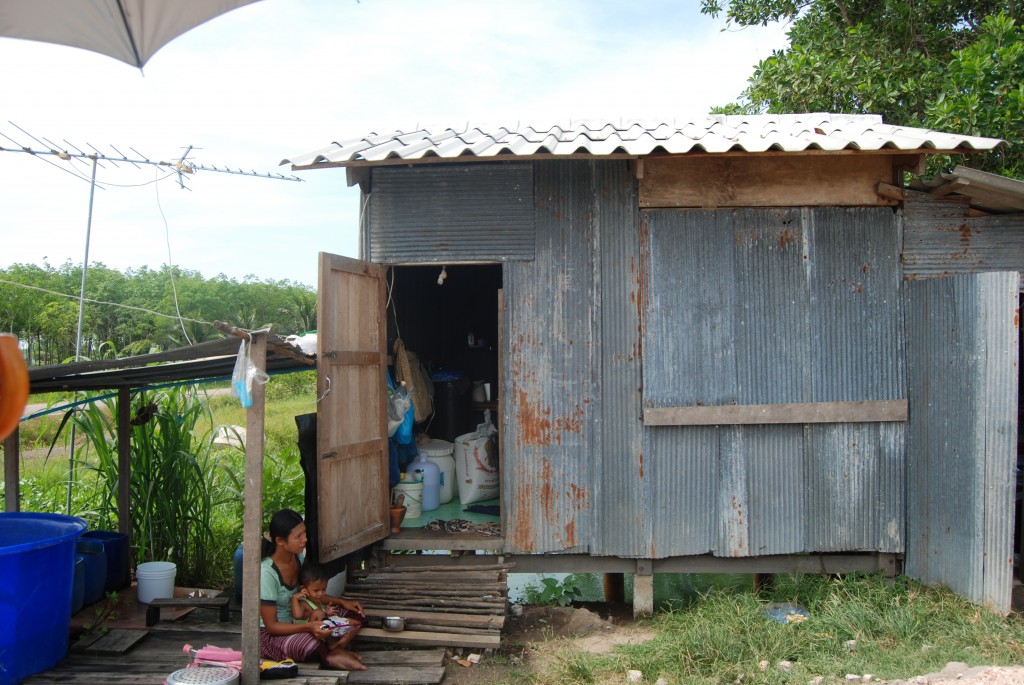Archive for the ‘Environment’ Category
Aquaculture: the future of food production?
So why do we need aquaculture improvement projects you might ask? Doesn’t the need for improvement suggest that there are problems? The answer is yes.
The root of these problems is similar that which has caused global warming, volatile financial markets, and global poverty to name but a few examples. Simply put, humans have not been able to demonstrate that we are capable of responsible or balanced management when there is an opportunity to make a lot of money, regardless of the cost for people and the environment. Some aquaculture development has proceeded from this perspective and the result has been a black eye for aquaculture, whose origins were largely based on the need to farm food for local consumption and certainly not to make profits for corporations.
The well documented environmental and social impacts of the salmon and shrimp farming industries are good examples of aquaculture gone wrong. It is interesting to note that although salmon and shrimp farming make up less than 15% of global aquaculture production; their problems have had a major influence on the perceived value of aquaculture, especially in western markets.
For me, this is a good example of the phrase “be careful to not throw the baby out with the bathwater”. Although there are very real impacts of aquaculture that have happened in the past and are still happening today, aquaculture is one of the best food production systems that humans have developed and will serve us well if we pay attention to farming the right species, in the right location, and at the right scale.
The next series of posts will explore each one of these key factors in greater detail and demonstrate why I believe this to be the case.
A bit about me
At this point (sorry for the absence), I have realized I have never really written much about my background and the work I am currently doing. So here goes….
I am an ecologist by training and studied Biology and Marine Conservation Ecology during my undergraduate and post-graduate education in Victoria, Canada. Since I was young I have had a strong desire to work on bringing humans back into balance with the natural limits of the planet.
For my master’s project, I chose to focus on the environmental impacts of salmon farming in British Columbia where their is a heated debate on whether or not this industry is really sustainable (I will write a future blog post on this topic). It was an intense learning experience (both academically and politically) that taught me how to really consider sustainability issues when thinking about an industry.
Immediately following my postgraduate education, I began working on defining sustainable seafood for Canadian and US NGO’s and I was able to apply my experience to other aquaculture species. My work included conducting science based assessments on major aquaculture species and well as roundtable discussions around the globe to define ecological and social sustainability standards for the major aquaculture species.
It is clear to me that aquaculture has strong potential as a food production system for humans. Aquaculture is currently the fastest growing form of food production and has been for several years. It has the potential to produce high quality protein for humans with low impact if it is done with the right species, in the right location, and at the right scale (more on this in the future).
Today, I live mainly in Thailand and work on Aquaculture Improvements Projects (AIP) for shrimp, Pangasius (Asian catfish), and barramundi (sea bass). My job involves working directly with all of the major players in a supply chain to ensure that they are implementing and using responsible environmental and social practices as defined by the Aquaculture Stewardship Council (more on this in the future as well).
That’s the story in a nutshell, I will elaborate more as the blog unfolds.
What would our world look like if nature had rights?
A new book called The Right of Nature: The Case for a Universal Declaration of the Rights of Mother Earth explores this fascinating question and includes commentary from folks such as David Suzuki, Vandana Shiva, Archbishop Desmond Tutu, and many others.
Consider for a moment that if nature did have rights then its “ecosystem services[1]” would likely have to be incorporated into our economic system and the “externalities” which the system depends on would have to be accounted for in everything we buy. Externalities are defined as “a side effect or consequence of an industrial or commercial activity that affects other parties (human and non-human) without this being reflected in the cost of the goods or services involved, such as the pollination of surrounding crops by bees kept for honey.” Clearly this would dramatically change how products and services are valued especially in the western world.
Here is the description of the purpose and history of the book posted on the Council of Canadians website………
In April 2010, Bolivia hosted a gathering for civil society in the wake of the failed December 2009 United Nations Copenhagen climate summit (COP 15). It was clear to millions of climate activists, scientists and environmentalists around the world that the UN process had been sidelined by a deal, the Copenhagen Accord, which represented a major step backward in the search by the UN for a binding, comprehensive agreement that would protect humanity and the Earth from the ravages of climate chaos. When more than 32,000 participants from around the world gathered for the World People’s Conference on Climate Change and the Rights of Mother Earth in Cochabamba, Bolivia, it was evident that a counter message had to be sent to the UN and the world that a far stronger commitment was needed if humanity is to successfully move to a safe and sustainable future.
Out of this World People’s Conference came a call to protect nature differently by recognizing the Rights of Nature, or as expressed by others, the Rights of Mother Earth. The UN General Assembly proclaimed April 22, 2010, Mother Earth Day, and the Declaration was introduced to the G-77 countries and UN Secretary General Ban Ki-moon several weeks later. It is the intention and hope of the drafters and supporters that this groundbreaking Declaration will take its place alongside the Universal Declaration of Human Rights as a guide for the future of humanity.
This book brings together the voices of acclaimed authors, progressive thinkers, political leaders and environmental and community activists from around the world who share their passion and insights about the Declaration, the Rights of Nature and the urgent need to recognize the unbreakable link between respecting ourselves and respecting the planet – Mother Earth – on which we all live and depend. The authors all reflect on the important question: What would our world look like if nature had rights?
This new way forward would inspire a new model of governance that places the Rights of Nature – the Rights of Mother Earth – at the heart of existence, recognizing that there is no such thing as a human right unless the natural world is protected now, and for all time.
The Right of Nature: The Case for a Universal Declaration of the Rights of Mother Earth is published jointly by The Council of Canadians, Fundación Pachamama and Global Exchange (2011).
[1] http://www.wri.org/publication/ecosystem-services-a-guide-for-decision-makers
Waste not want not?
Ok, so it should be obvious that I am a big believer in sustainability and I certainly think that we should use every nutrient and resource that we have on this planet to the fullest extent we can. However, my trip to Vietnam this week is challenging me to consider how far I am willing to go with that belief.
I have been to Vietnam several times before and I am used to seeing crazy things, especially on motorbikes, as the Vietnamese are experts at getting motorbikes to carry all manner of things that you wouldn’t expect to see on a them. What I saw today, however, was not something oversized and seemingly out-of-place but, rather, something small and furry.

As I was returning to my hotel from my day in the field, we approached an older couple riding a motorbike with two small cages on the back. As we got closer, I soon realized that the cages were filled with rats. The driver of my taxi must have seen me looking and began to laugh and then explained to me that these rats were collected by the couple at a local restaurant and they were taking them home to eat or possibly to sell to others to eat. Yes, I said to eat!! Apparently, in south Vietnam rats are often eaten as my Vietnamese colleague explained to me.
“Waste not want not” was the first thing that jumped into my head, which was quickly followed by …well, maybe not in my world, but good for them!
Food production chains are only as “responsible” as their poorest link
We visited a shrimp farm today and it was my first experience seeing and understanding how farm workers can be accommodated. After stopping to watch a man feed the shrimp in a small boat, we approached a small hut on the side of the pond. I found myself hoping that this hut was a storage shed for materials used on the farm. However, I soon noticed that there was a woman with a baby sitting at the doorway and pictures of the Thai King (very common in Thai homes) posted on the walls inside. At that point I knew I was mistaken and that this was the home for the family of the man feeding the shrimp. While, of course, one can argue that a North American’s sense of minimum living requirements are exaggerated, I viewed this home as insufficient for the needs of this family.
I realized I was looking at the end rung of the supply chain for industrial shrimp. As the western world increases its interest and purchases of responsible products, a good indicator of whether or not this is making any difference will be if this family’s home improves. In other words, “responsible” supply chains are only as good as their poorest link.
While one might want to point the finger at the farm owner, I think it is important to realize that anyone who benefits from or uses a supply chain is part of the problem and is, therefore, responsible for finding a solution. In the west we are fond of pointing the finger at the developing world and blaming overpopulation for these types of problems, but this only allows us to avoid our own responsibility and allows the problem to continue. A basic requirement of a responsible world means that our industrial production systems function such that everyone who is involved in the supply chain is taken care of to a minimum acceptable social standard. This may mean paying higher prices for certain food products in the western world, but such price increases are, in reality, just reflecting the real cost of responsible food production.
Giant bluefin tuna sells for a record-high $396,000 at Tokyo fish auction
For those of you who don’t follow the plight of the Bluefin Tuna this story may get you interested.
Bluefin tuna are the giant fish of the sea and one of the only fish species to colonize every ocean due to their ability to regulate their temperature. A novel ability among marine fish.
Bluefin tuna are also highly prized for sushi and are continuously fished beyond their natural limits because of their value. Governments around the world continue to set catch limits above the recommendations of fisheries scientists. Without greater conservation and a reduction in the global catch, the future for the Bluefin tuna is not bright.
The story of Bluefin tuna is a good example of how an economic system that has no grounding in the natural limits of the planet is wiping out one of the truly magnificent creatures of the ocean despite the significant efforts of many people to stop it.
Find the story at this link:
http://ca.news.yahoo.com/giant-bluefin-tuna-sells-record-high-396-000-20110104-191741-215.html
New Documentary on the “Economics of Happiness”
“The Economics of Happiness,” produced by the International Society for Ecology & Culture (ISEC). According to ISEC:
“Economic globalization has led to a massive expansion in the scale and power of big business and banking. It has also worsened nearly every problem we face: fundamentalism and ethnic conflict; climate chaos and species extinction; financial instability and unemployment.
There are personal costs too. For the majority of people on the planet life is becoming increasingly stressful. We have less time for friends and family and we face mounting pressures at work.
“The Economics of Happiness describes a world moving simultaneously in two opposing directions. On the one hand, government and big business continue to promote globalization and the consolidation of corporate power. At the same time, all around the world people are resisting those policies, demanding a re-regulation of trade and finance—and, far from the old institutions of power, they’re starting to forge a very different future. Communities are coming together to re-build more human scale, ecological economies based on a new paradigm – an economics of localization.”
The film will be officially released in January, and a number of special screenings have been scheduled in Seattle, Berkeley, Portland, Toronto, New York, Cork, Oslo, London, New Delhi, Tokyo and Hong Kong.
Related Links for the documentary, screening schedule, screening updates and hosting opportunities, and ISEC follow:
http://www.theeconomicsofhappiness.org/
http://www.theeconomicsofhappiness.org/find-a-screening-near-you
http://www.theeconomicsofhappiness.org/email-newsletter
http://www.localfutures.org/
Shark Fins In China Town
Sharks are, perhaps, among the most misunderstood creatures in the oceans. Of course, it is true that sharks are indeed fierce predators, which have evolved incredible abilities for locating and attacking their prey, and most people have seen footage of Great Whites attacking seals in spectacular displays of carnage. Most people are also aware that sharks are capable of occasionally attacking and killing people – a strong popularized fear that has been fueled by movies like Jaws and, more recently, by the Discovery Channel’s Shark Week. However, one can argue that most people have the facts wrong. The reality is that shark attacks occur extremely infrequently, considering the numbers of beach-goers worldwide. Furthermore, sharks have roamed this earth for millions of years and serve a very important function in oceanic ecosystems. They are more worthy of amazement that they are of condemnation.
Today, sharks are in desperate trouble as shark populations continue to decline dramatically in oceans all over the world. Of course, you do not often hear about this because the popularized fear of sharks makes their demise less news worthy than reporting on the demise of more lovable and cuddly creatures, such as whales and panda bears. This makes the plight of sharks particularly concerning and the solutions to the problem even harder to find.
Sharks are ruthlessly fished typically not for their meat, but rather for the use of their fins. Shark Finning is a global industry fueled mainly by high demand in Asia for shark fin soup. While in Bangkok, we toured China Town where one of the most prominent features of the area was the sale of shark fins and shark fin soup. Buildings were covered with pictures of shark fins and many restaurants advertised their sale more prominently than any other menu item. The sale and consumption of shark fins is arguably one of the most atrocious uses of a marine animal that currently exists. The fishing of sharks for their fins involves catching the shark with a hook or net and then removing all of its fins on the deck of the harvest vessel while the animal is usually still alive. Once all of the fins are removed, the shark is then tossed overboard sinking helplessly to the bottom of the ocean where it eventually suffocates and dies.
The shark fins we saw in Bangkok sold for 19,000 Baht (approximately US$575) for 3 dorsal fins (i.e. from 3 different sharks), meaning a shark’s life is worth a ridiculously low US$191 on the market. A negative public perception coupled with the existence of a steady demand for their fins, the future for many shark species is looking bleak.
One can speculate that such treatment of sharks is tolerated in part because of the popularized public fear of them when, in reality, sharks are not human hunters, but rather the hunted. You can do your part in preventing the extinction of these creatures by helping to curb their market demand. Please ensure that you do not purchase any products that contain shark meat or cartilage. If you are interested in a more detailed story about the plight of sharks, check out the multiple-award-winning movie Sharkwater.
Seafood Traceability
Defining sustainable aquaculture and fisheries practices is a significant challenge that is currently being undertaken by many NGOs, seafood buyers, and producers worldwide. The goal is to ensure that interested consumers and businesses can purchase seafood from sustainable sources, thusly reducing the negative environmental impact of their seafood choices. However, while defining sustainable production is a critical first piece of the puzzle, ensuring that the products consumers and businesses actually acquire are indeed what they intended to purchase is the second.
Seafood fraud, or the mislabeling of one seafood product for another, has been widely reported. In one study, researchers tested fish labeled as “red snapper” and found that 77% of the products they tested were, in fact, different species. A similar situation was found in the case of grouper in restaurants along Florida’s Gulf Coast. Such scams occur everywhere and have been fairly successful because there is greater supply of more inexpensive and lesser-known species than those perhaps desired by consumers. The reality is that the average person’s palette cannot tell the difference among certain fish species.
Recently, while in Bangkok, Thailand I passed several restaurants selling seafood, which loudly touted that they offer “red snapper.” Always curious, I checked it out for myself and found that their “red snapper” was actually red tilapia – a species that is farmed all throughout Asia, while real red snapper is usually caught in the wild. Amusingly, the fish was even labeled with a tag with the name of the farm where it was produced. Such indications of origin are, however, not always so clear.
This suggests that either A) the people selling the red snapper tilapia are themselves running the scam or B) giving the benefit of the doubt to the friendly restaurateurs, they do not fully understand the production chain. Either one of these scenarios leads to the same conclusion: education about seafood sourcing is necessary for consumers and, perhaps more importantly, for those who buy and sell seafood on a daily basis. However, understanding the source of the products one buys can be a daunting task, especially if there are not trustworthy mechanisms in place to help minimize the burden of differentiating the good from the bad and the legitimate from the fraudulent.
Increasing the traceability and transparency of the seafood industry is critical to curbing the frequency of seafood mislabeling and, moreover, to achieving the greater goal of successfully reshaping aquaculture production to using more sustainable methods. If we do not find a way to do so, efforts to improve seafood production practices could be undermined by green washers (the practice of companies disingenuously spinning their products and policies as environmentally friendly) looking to make money off of false marketing, selling products that are not what they claim to be. The solution may rest on the forming of an alliance between NGOs and industry to lobby the government to secure legislation and enforcement for seafood traceability that would likely be mutually beneficial for both parties as well as well-meaning consumers.
Understanding Seafood in Asia
Well it’s been a while and I have had a busy several months, but it’s definitely time to move this blog forward.
I am now in Asia, where I will be roaming about for the next several months, trying to learn more about the aquaculture seafood supply that enters the US and Canada. In the US alone, over 80% of the seafood that is consumed is imported. As someone who spends his life trying to learn about how to make seafood supplies sustainable in order to ensure healthy food and a healthy planet, an understanding of the supply chain and how it works is critical. Furthermore, China alone produces approximately 70% of global aquaculture supplies and the rest of Asia produces the vast majority of the remaining 30%. This means that any understanding of the global picture for aquaculture production must encompass China and the rest of Asia. It was for these reasons that I packed up my suitcase and went on a road trip for an indefinite period of time to Southeast Asia beginning in October 2009.
The opportunity and idea for this trip was generated by my involvement in the Shrimp Aquaculture Dialogue (more on this in a future posting). The process is seeking to develop performance-based standards (i.e. not best management practices) that will ensure ecological and social sustainability for the aquaculture industry. With this type of process, consolidating input from as many stakeholders as possible is critical. The process seeks to create these standards in order to form a definition of sustainability for shrimp aquaculture production that can be used for certification and by major seafood buyers interested in sourcing sustainable seafood for their business. For the Shrimp Aquaculture Industry, 85% of production comes from Asia, making Asian shrimp producers a very important stakeholder to engage for the Shrimp Aquaculture Dialogue. This trip will involve meetings, site visits, and hopefully some key insights that I plan to share with you via this blog, so stay tuned!
